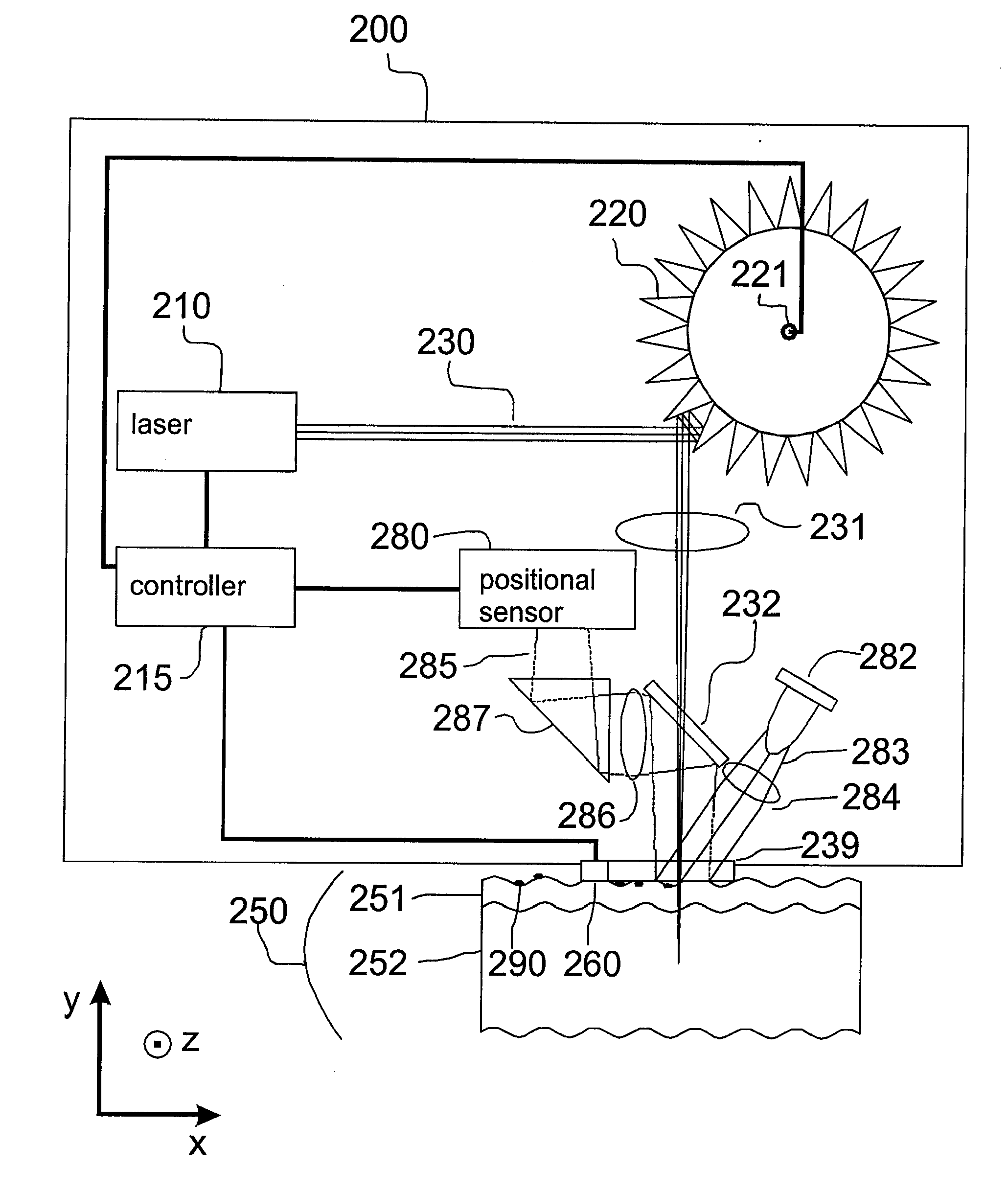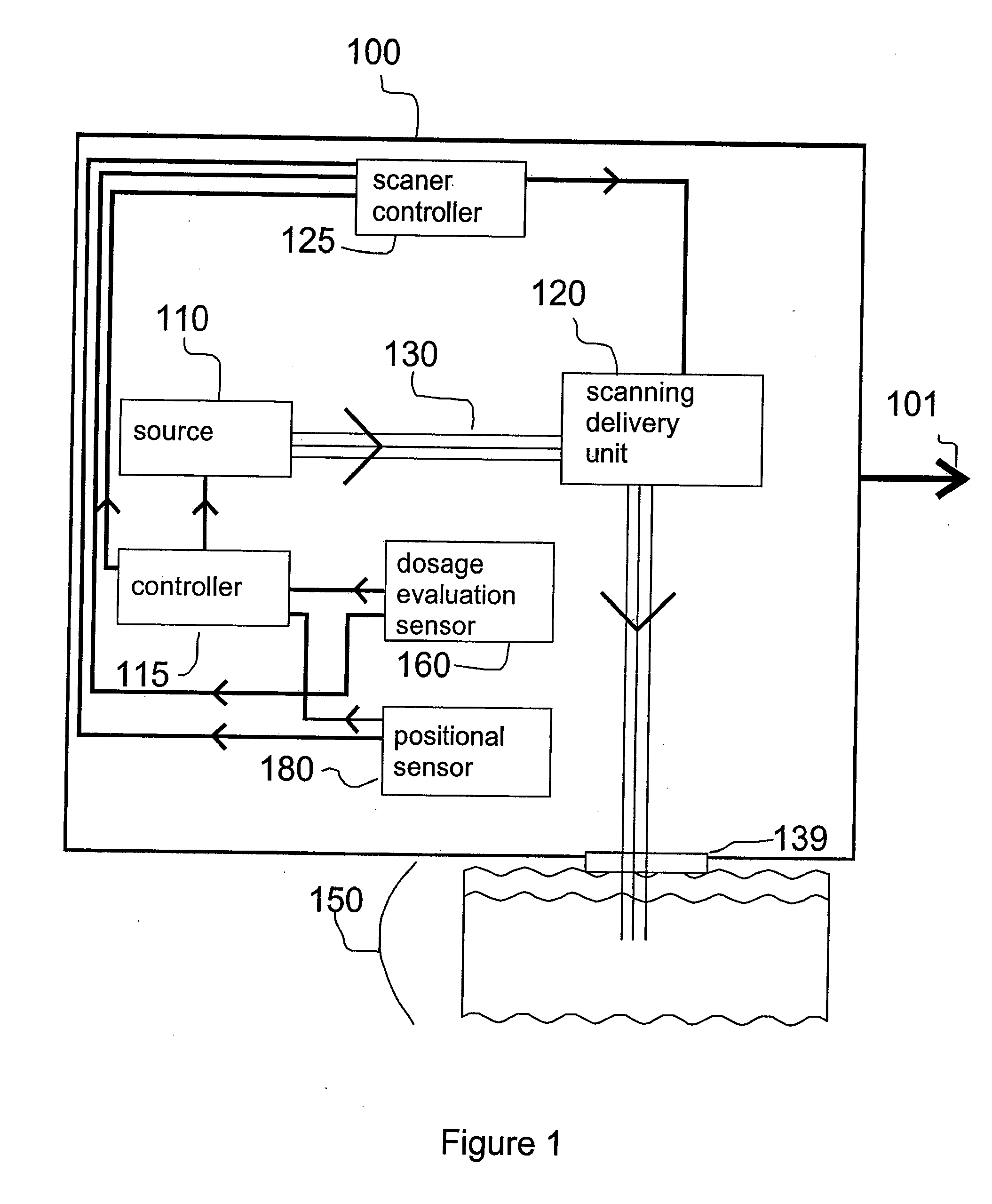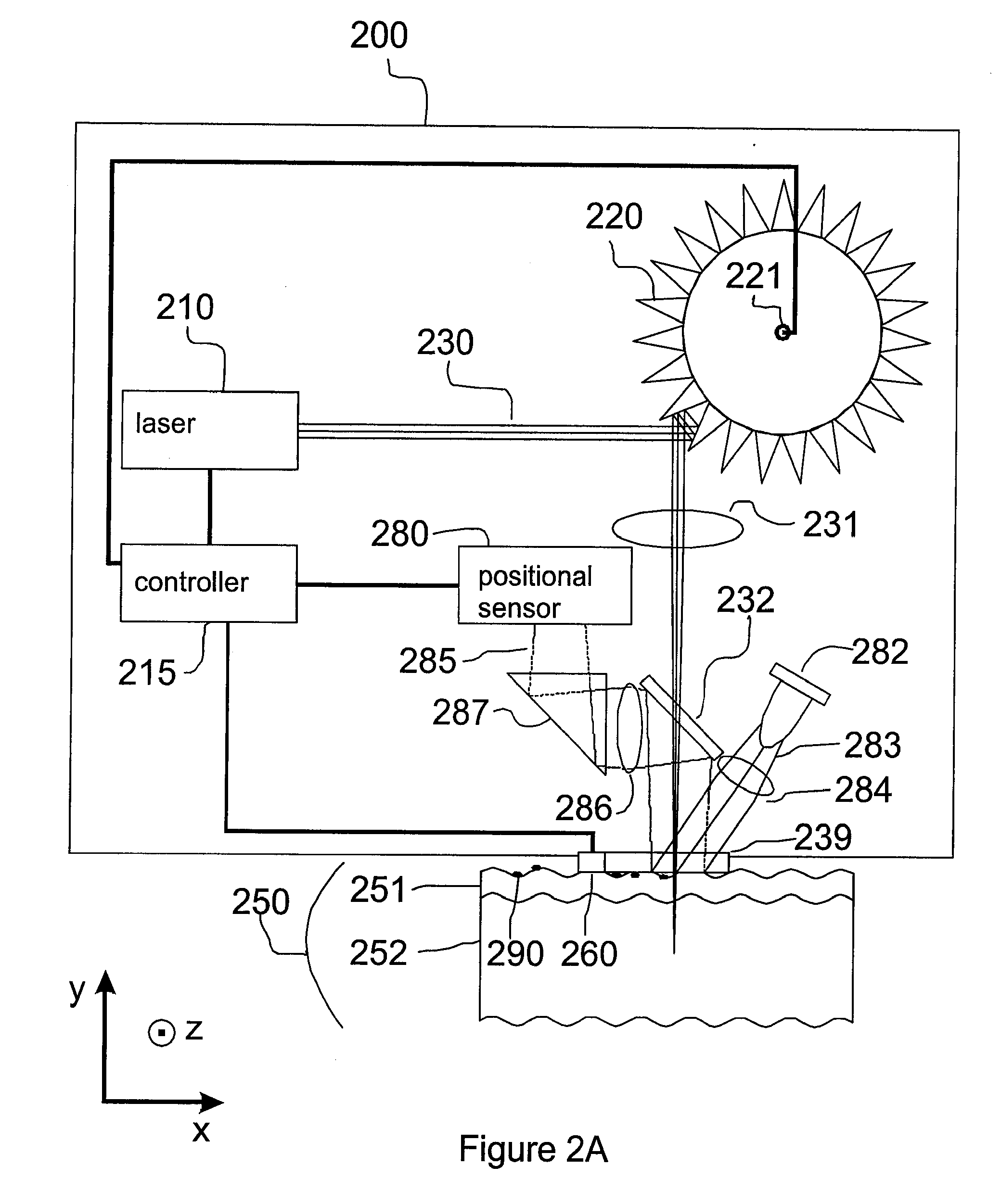Method and Apparatus for Monitoring and Controlling Thermally Induced Tissue Treatment
- Summary
- Abstract
- Description
- Claims
- Application Information
AI Technical Summary
Benefits of technology
Problems solved by technology
Method used
Image
Examples
Embodiment Construction
[0037] This invention describes an electromagnetic system with automatic adaptive control of (photothermal and / or RF) treatment parameters and / or activation. A nominal pattern and treatment rate may be defined when the system begins treatment and this treatment pattern can be modified based on algorithms that describe the skin response to treatment and / or the positional parameters of the handpiece. Which positional parameter measurements or skin response measurements are made may depend upon particular measurement results. For example, if the handpiece is moving very rapidly across the skin and treatment power is proportional to relative handpiece speed, then bulk heating of the tissue may be a concern. In this case, the dosage evaluation sensors may be instructed by the controller to measure skin parameters that are associated with blistering due to over treatment. If movement is slow, bulk heating and blistering may be less of a concern and more of the processing power of the cont...
PUM
 Login to View More
Login to View More Abstract
Description
Claims
Application Information
 Login to View More
Login to View More - R&D
- Intellectual Property
- Life Sciences
- Materials
- Tech Scout
- Unparalleled Data Quality
- Higher Quality Content
- 60% Fewer Hallucinations
Browse by: Latest US Patents, China's latest patents, Technical Efficacy Thesaurus, Application Domain, Technology Topic, Popular Technical Reports.
© 2025 PatSnap. All rights reserved.Legal|Privacy policy|Modern Slavery Act Transparency Statement|Sitemap|About US| Contact US: help@patsnap.com



